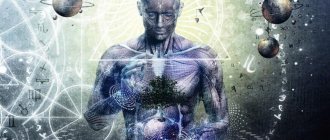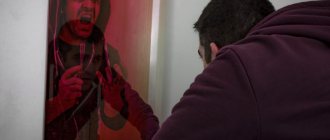“Flow” or “flow experience” is a state of complete capture by what is happening, when a person experiences intense involvement in any activity, the fullness of life, the joy of being, is in the process and in the moment so that he ceases to notice how time passes.
It may seem that Csikszentmihalyi is talking about flow as a property of creative work. This is not true: the book is full of examples of how labor on an assembly line or the arduous everyday life of a farmer can provide an “optimal experience” (another definition of “flow”). Although, indeed, much more often such an experience is achieved when the activity is not monotonous, variable, when a person can often make choices and make independent decisions in the process.
Research by Csikszentmihalyi shows that stress, pressure from bosses, and even the belief that “work shouldn’t be very enjoyable” can interfere with the “optimal experience” at work.
How to get into a state of flow
Focus on the process
A teenager practices a trick on a scooter a thousand times: he has a goal, but it’s the process that captivates him. The poet writes the poem as a finished form, but he wants to devote himself to the process of writing, and would not agree to receive the poem ready right away. The goal of the surgeon is to cure the patient, but at the same time, many of them are captivated by the process of performing the operation.
To achieve a flow experience, it is important to avoid distractions, maintain attention, become fully immersed in the activity, and maintain engagement. Therefore, people who have problems with con. But, Csikszentmihalyi adds, attention can and should be trained - and even a significant attention deficit can be leveled out if the process is really protracted.
Find autotelic activity
“Flow experience” arises only as a result of autotelic activity. This is what Csikszentmihalyi calls activity that is performed for the sake of the activity itself. For example, a violinist does not play to receive applause or earn money, his goal is to perform the music itself. A teacher who teaches children because he enjoys the process is engaged in an autotelic activity, but if he “wants to raise schoolchildren to be model citizens,” he is not. A sense of duty, calculation, thoughts about the future or some extraneous goals prevent the “flow” from capturing us.
Structure activities
The “experience of flow” occurs when we engage in structured activities such as work, creativity, or play that have rules. There should be no chaos around and inside us. A person does not flounder in the “flow” limply, is not captured by it against his will, he acts according to certain rules that are given to him by his activity and environment. Therefore, “flow” cannot occur under the influence of alcohol or drugs: consciousness must remain clear and structured, and the hidden internal logic of the reality in which we find ourselves must not be disturbed.
Control what is happening
“Flow” is based not only on being captured by an activity, but also on control over what is happening. This is what makes “flow experience” different from simply experiencing pleasure: we become invested in what is happening. Csikszentmihalyi writes that fans of extreme sports actually love not only risk, but also the feeling that even in a moment of danger they have everything under control. Climbing a rock in a state of “flow”, which means being extremely concentrated on the process, is safer than absent-mindedly crossing a noisy avenue.
The main enemies of the flow
You can achieve a state of flow only by ordering your thoughts and consciousness, the natural state of which is chaos. People who have not undergone proper training in the absence of an external object of attention are not able to concentrate on one thing even for several minutes in a row. For the same reason, when we are alone, we can notice with what pleasure our consciousness plunges into a chaotic state of entropy. Left to its own devices, it spontaneously switches from object to object, mostly selectively, lingering on the alarming and unpleasant.
A person who cannot voluntarily organize his consciousness and direct his attention mentally inevitably slides into his problems, real or imaginary “painful” sensations. Achieving internal order allows you to achieve an optimal state of consciousness. Being in an optimal state, mental energy = our attention is concentrated on solving a specific problem. At the same time, our capabilities and skills allow us to cope with the task at hand. Since the process of moving towards a goal is accompanied by concentration of attention on its implementation, everything that does not correspond to the set goal is cut off, consciousness is streamlined.
The state of flow is the complete opposite of the state of psychic entropy - the main source of chaos in consciousness. Mihai compares battles with the entropy of consciousness to a battle for oneself, for the ability to control one’s attention. The joy of feeling in the flow is nature’s highest reward to a person for his desire to solve increasingly complex and meaningful problems, a reward that cannot be obtained in any other way. The only currency that can be used to pay for the quality of experience is attention and directed, organized effort.
By controlling ourselves, the feelings and impressions we experience, we gain the key to happiness, find an opportunity for joy and a place for meaning in the routine of everyday life that surrounds us.
How does the state of “flow” feel?
During the flow experience, there is a feeling of unity with others or with the environment in which the person is located. A surgeon involved in the “flow” feels like one with all the personnel involved in the operation, a farmer feels like a part of nature, a general mechanic feels like he’s part of the big thing, he doesn’t disappear, people just stop being aware of it for a while.
In a state of “flow” there is no need for reflection. This is why it is so difficult to stay in the “flow” for a person who is fixated on the opinions of others or is simply too self-centered: he never stops thinking about himself, it is difficult for him to detach himself from his “I”. When a person in a state of “flow” reaches an intermediate goal and begins to become aware of “I” again, he feels that his personality has become richer: perception and new achievements change him.
"Paradoxical" work
When it comes to work, guided by social stereotypes, most of us will answer: working is not the most pleasant thing in life and idle time is much better than working. However, research shows the opposite: people experience a sense of strength, fullness of life and drive at work. How to resolve the apparent contradiction?
It’s all to blame for the social stereotype, according to which work is a kind of duty, something that limits a person’s freedom and something that, if possible, should be gotten rid of at any cost. Rooted at the level of a conscious attitude, such an idea prevents a person from enjoying the process even if he sees obvious advantages in the work and enjoys it. As a result, he goes to work, paying attention to it against his will, while feeling that he is wasting his mental energy in vain and this time should be erased from his life.
Is it always possible to achieve "flow"?
According to Csikszentmihalyi - always. There are situations when this is really very difficult and few succeed. Interferes with achieving “flow”:
- situations of anomie - extreme uncertainty, when you have to concentrate on simply surviving and avoiding chaos (for example, a mother with children in a refugee camp);
- excessive monotony and regulation;
- alienation from the results of one’s own labor (few people manage to feel in the “flow” when working on an assembly line).
However, there are examples of people who achieved a state of “flow” in very difficult situations, such as solitary confinement or being in a concentration camp. For example, Viktor Frankl or Alexander Solzhenitsyn. Csikszentmihalyi gives the example of blind and paralyzed people who manage to be in the “flow” despite the misfortunes that befall them. He calls such people “autotelic individuals.”
About goal setting
Correctly set and formulated goals are exactly what maintains our ability to concentrate at the required level. Almost any action, even the simplest and seemingly primitive and monotonous, can become an exciting challenge and bring a lot of pleasure. To do this, you just need to look at it from an alternative, new point of view.
You can achieve the required results by following Mihai’s advice:
- Set a main goal and as many specific intermediate goals related to it as possible.
- Concentrate extremely on what is happening and strive to preserve it.
- Discover a way to measure the achieved result within the chosen system of goals.
- Increase the difficulty of a task when the process is no longer interesting and seems boring.
Having a specific goal is an opportunity to streamline efforts to achieve it, which does not mean that life will become more comfortable and enjoyable. While realizing goals and experiencing difficulties, a person may encounter various problems and troubles. But, having followed the path of abandoning the goal for the sake of a comfortable life without any special problems, a person will inevitably end up paying with a feeling of emptiness and meaninglessness of his existence.
How to achieve “flow”
Csikszentmihalyi does not offer simple recipes, and yet what he says does not seem unattainable. Just:
- find the type of activity that really interests you;
- exercise the ability to concentrate;
- set small goals that develop your skills;
- practice, devote yourself to what you love hour after hour and day after day.
It is precisely this kind of activity—with set goals, clear rules, and pleasure in the process—that allows a person to overcome his inherent “psychic entropy.” Our vanity, despondency, anxiety, envy, negative thoughts cause our attention to wander - but we can, with a conscious effort, direct our mind to where our “flow” rushes - whatever it is: caring for plants or writing symphonies, playing with a child or management of the corporation.
“The possibility of development, which allows us to simultaneously enjoy life, is to create an order of a higher level from entropy, which is an inevitable condition of existence. This means that every new challenge that life throws at us should not be perceived as something that must be avoided at all costs, but as an opportunity for learning and self-improvement.”
Mihaly Csikszentmihalyi
author of the book "Flow"
What is a stream
These sensations can not always be called pleasant and natural. The right and opportunity to gain control over our own lives sometimes comes at the cost of pain and severe restrictions. But without pain there will be no growth or achieved goals. And, to summarize, probably each of us will agree: these are the experiences that are more suitable to describe the state of happiness.
Csikszentmihalyi bases these conclusions on the concept of flow - a state when a person completely forgets about himself and is absorbed in his activity, when everything that is not related to the task at hand fades into the background, and the pleasure experienced from the process is such that people will be willing to pay extra for one opportunity do this. This is a state of complete fusion and absorption in what you love, when time loses its usual meaning, and instead of fatigue at the end of the process, a surge of energy is felt.
Csikszentmihalyi gleaned insights into the state of flow from studies of creative individuals, but, he emphasizes, flow is not the privilege of a select few. Unlike peak experiences, happiness or subjective well-being, flow is not associated with grace descending from above - it is the fruit of our meaningful efforts, which, merging with meaning, give birth to a joyful and active state that nourishes energy.
Stop multitasking
Instead of multitasking, group your responsibilities. For example, when answering email, do not also try to communicate with the client by phone. Of course, this approach requires a lot of effort: you will have to plan your day in advance, perhaps even warn your colleagues and managers.
To try this method, set aside several blocks of time to work on different groups of tasks. Once you've completed one group, mark those tasks off your daily completion list.
By celebrating small victories like these, we give ourselves a boost that helps us tackle big things.
Naturally, this is not suitable for all professions: in some areas of activity it is necessary to react quickly.
Have a clear goal
A prerequisite for a state of flow is a clear, clear goal. For example, a 2003 study found that hospital cleaners felt like they were part of a team that helped A. Wrzesniewski, P. Rozin, G. Bennett. Working, playing, and eating: Making the most of most moments / Flourishing: Positive psychology and the life well-lived for people to recover.
This view brings awareness of our purpose and causes a different attitude towards work, completely different from when we think only about salary or career.
Therefore, it is very important to define your own purpose, which will combine your current position with your personal mission. If you're struggling, think back to the part of your job that brings you the most satisfaction and think about why you enjoy it so much.
Develop awareness
If you don't develop awareness, any thought or urgent request that comes into your head will pull you out of the flow state. To practice mindfulness, try doing special exercises regularly. Here are some examples.
Feet on the floor
Feel your feet on the floor. Pay attention to where your feet come into contact with your socks or shoes. Lightly press your feet onto the floor, feel its hardness and stability. This will help you feel connected to the present moment.
A minute of mindfulness
Set a timer for one minute and count the number of breaths you take. Repeat several times to determine your average number of breaths per minute. Then make it a rule to arrange such conscious moments for yourself several times a day.
Models of people flows and their comparison
UDC 514.18
, adjunct, NUGZU,
, Ph.D., Art. teacher, NUGZU
, Doctor of Technical Sciences, Prof., NUGZU
MODELS OF PEOPLE FLOWS AND THEIR COMPARISON
Existing approaches to modeling people flows are analyzed, an algorithm for modeling individual flow movement for heterogeneous flows is proposed, and the results obtained are compared with the results of other researchers
Keywords
: individual flow motion, modeling, heterogeneous flows, algorithm, computer modeling
Formulation of the problem.
During the operation of buildings, the safety of people must remain the predominant factor. According to SNiP 21-10-97, “Buildings must provide... solutions that ensure, in the event of a fire, the possibility of evacuating people, regardless of their age and physical condition, outside to the area adjacent to the building before there is a threat to their life and health due to exposure to dangerous fire factors” ( clause 4.1). To do this, scientifically based plans must be made for the evacuation of people along evacuation routes, including stairs, elevators, corridors on the floors, and in the case when the listed routes are blocked, emergency evacuation means within the fire compartments. In this regard, an unresolved problem arises of justifying the evacuation movement of flows of people from buildings.
Analysis of the latest research and publications.
The work constructs a mathematical model [1] of evacuation from high-rise buildings and proposes a method for simulating evacuation, the components of which are:
– modeling the movement of people flows along a network of corridors and stairs;
– modeling the movement of people flows along a network of corridors with the use (selection) of elevators (with the development of recommendations for their programming);
– modeling the flow of people along a network of corridors with the choice of stationary means of emergency evacuation.
This article discusses an approach to modeling the movement of heterogeneous flows of people along a network of corridors.
He laid the foundations for studying the movement of human flows by conducting a huge series of field studies [2]. Currently, various software products are used to simulate the movement of people, for example Flowtek, Evatek, Myriad, PedGo, Exodus, Grid-Flow, STEPs, Path-Finder, Floor-Field, Social-Force [3].
In Russia, the Ministry of Emergency Situations allows the use of three models for calculations: simplified analytical (S-A), simulation-stochastic (I-S) and individual-flow (I-P) [3]. The simplified analytical model is the simplest and most mature. All evacuation routes are divided into elementary sections, each of which considers a homogeneous flow with its own characteristics. However, the heterogeneity of the contingent of evacuees and the mobility group are not taken into account; difficulties arise when calculating evacuation from buildings with developed internal infrastructure.
a model was developed, which in modern terminology is called simulation-stochastic. This model is much more accurate by dividing the building into elementary sections about 1 m wide and performing several calculation operations per second for each section. However, the use of the model is difficult when analyzing the individual characteristics of human evacuation.
Subsequently, the SigMA model was developed. DC (Stochastic field Movement of Artificially People Intelligent discrete-continuous model – stochastic field discrete-continuous model of people’s movement with elements of artificial intelligence) [4]. This model, related to cellular (cellular) automata or CA models, takes into account the dependence of a person’s speed on density, age, emotional state, and mobility group. It is continuous in space in the chosen direction, but only a finite number of directions are assumed to which a person can move from the current position. The disadvantage of the CA model is the inability to take into account changes in the widths of corridors, openings, and specifying different sizes and shapes of particles.
In individual-flow models, the object of modeling is an individual person (individual). In the individual-flow model, the speed of a pedestrian depends on the flow density, which is calculated for each person separately. The results of a comparison of the Floutek models (simplified analytical and stochastic simulation) with the individual-flow model (officially standardized in Russia) indicate that the individual-flow model gives numerical values of the parameters of the evacuation process that are inadequate to the required ones [3].
The analysis of similar foreign models [3], which have numerous operational capabilities and video presentation methods, shows that the works use incorrect dependencies between the parameters of human flows.
So, today there are no models of individual flow movement of people that are adequate to the real flow. Interest in the model is motivated by the need for close attention to the movement of people with limited mobility in a mixed flow in a fairly wide range of public buildings of different classes of functional fire hazard.
Statement of the problem and its solution.
Consider a movement path (for example, the corridors of a building floor) as an area. The path is divided into areas (segments), numbered, respectively, . The evacuation area is presented in the form of a tree (graph). The edges correspond to segments of corridors, the vertices correspond to intersections and points of “gluing” of segments. A segment can have a variable width (changes linearly). For each point of the segment, an algorithm for calculating the distance to the exit and an algorithm for calculating the direction of preferential movement are known.
For each person, the following parameters are specified: size, speed of movement, maneuverability (in the form of the size of the angle in which the search for the best direction of movement is carried out) and comfort, which characterizes the size of personal space. To model the movement process, a person is approximated by an ellipse.
The purpose of the work is to find the maximum total movement of people (maximum total distance traveled) located in the evacuation area (segment) of people, with restrictions on the conditions for non-intersection of unoriented ellipses with each other, the conditions for placing them in the area, taking into account the minimum distances, the need to comply with which is caused by comfort conditions .
In [4], a mathematical model of the problem was constructed and analyzed. A solution method and algorithm is proposed, the main idea of which is as follows.
At each step, the ellipses are sorted by increasing distance to the exit. Then, in sorting order, for each of the ellipses, the local flux density and the preferred direction of movement are determined by the coordinates of the center position and the angle of rotation. For the predominantly chosen direction of movement, within the limits of the maneuverability angle, a discretely defined number of directions is searched and among them a direction is found along which the maximum movement can be achieved in a second without violating the boundaries of segments and without intersecting with other ellipses. The speed of movement depends on the local flux density. The obtained speed and distance values are adjusted taking into account the comfort value.
Computer modeling of the movement of people was carried out using the example of “Model of the movement of human flows with the spreading of their head parts” from the textbook [5]. The evacuation process is presented in four fragments in Fig. 1. The authors of the manual obtained an evacuation time of 93 s, using the approach under consideration - 98 s, the absolute error is 5 s, and the relative error is 0.05 (5%).
The models were also compared according to their functionality. Table 1 summarizes the most significant, in the opinion of many researchers, criteria for choosing a mathematical model among the models from the Fire Risk Calculation Methodology [6] and the SigMA field model. DC and the individual flow model under consideration.
Conclusions.
Since today there are no approaches adequate to the real processes of movement of heterogeneous flows, to justify space-planning decisions from the point of view of the safety of people in buildings, the development of algorithms and packages for computer simulation of real processes of individual movement of people, which have a large number of functional capabilities, is relevant. .
Fig. 1. Computer simulation of individual flow motion
Table 1. – Comparative analysis of models
| Criteria | Models | ||||
| U-A | I-P | I-S | SigMA. DC | I-P NUGZU | |
| Flow reformation (spreading, compaction) | — | — | + | + | + |
| Merging threads | + | + | + | + | + |
| Non-simultaneity of merger | — | — | + | + | + |
| Dismemberment | +/- | +/- | + | + | + |
| Formation and resorption of accumulations | +/- | +/- | + | + | + |
| Taking into account the heterogeneity of the human flow (variability of physical and emotional state) | — | + | — | + | + |
| Movement in a room with a developed interior layout | — | — | — | — | + |
| Movement through areas of “unlimited” width | — | — | — | + | + |
| Taking into account the peculiarities of people’s choice of evacuation routes | — | — | — | + | + |
| Accounting for individual evacuation scenarios (following instructions, assigning roles) | — | — | — | + | + |
| Accounting for countercurrents and intersecting flows | — | — | — | + | + |
| Consideration of visibility conditions | — | — | — | + | + |
| Accounting for complex building infrastructure | — | — | — | — | + |
| Taking into account differences in the metric characteristics of individuals | — | — | — | — | + |
LITERATURE
1. Combination and methods of dispersion and transfer for the assessment of evacuation routes in high-altitude buildings during design /: Author's abstract. dis. ...cand. tech. Sciences: 01.05.02 “Mathematical modeling and computational methods.” – Kharkiv, 2014. – 25 p.
2. Belyaev people for mass purposes / . – M., 1938. – 71 p.
3. Kholshchevnikov of various models of human flows and the results of software and computing systems / , // Fire and explosion safety. – 2015. –T.24. –No. 5. ––P.68 – 74.
4. Danilin model of individual flow movement of human and transport flows / , , // Bulletin of the Kherson National Technical University, Kherson: KhNTU. –2016. –№3(58). –P.501–505.
5. Kholshchevnikov and people’s behavior during fires: textbook / , . – M.: Academy of State Fire Service of the Ministry of Emergency Situations of Russia, 2009. – 210 p.
6. On approval of the methodology for determining the calculated values of fire risk in buildings, structures and structures of various classes of functional fire hazard [Text]: Order of the Ministry of Emergency Situations of Russia dated June 30, 2009: registered. in the Ministry of Justice of the Russian Federation 08/06/2009. – No. 000.
Elin, ,
Model and flow of people and their leveling
New approaches to modeling people flows are analyzed, an algorithm for modeling individual flow flows for heterogeneous flows is proposed, and an equalization of results with the results of other predecessors is established.
Key words:
individual flow flow, modeling, heterogeneous flows, algorithm, computer modeling
AN Danilin, VV Komyak, VM Komyak
Models of movement of flows of people and their comparison
Analyzes the existing approaches to modeling the flow of people, propose an algorithm simulation of the individual-and-flow movement for heterogeneous flows, compares the results with the results of other researchers
Keywords:
individual-and-flow movement, simulation, heterogeneous flows, algorithm, computer simulation
Get text
A moment of history
The very concept of a “flow state” was coined by the founder of positive psychology, Mihaly Csikszentmihalyi, who studied such leaps in productivity. He discovered the concept and gave it a name, but neuroscientists still cannot fully explain what exactly happens to the brain during flow. Arne Lietrich argues that flow is associated with decreased activity in the prefrontal cortex. Arne calls this temporary hypofrontality, in which a person loses a sense of time, self-awareness and self-criticism, which makes it easier for him to solve creative problems.
Other scientists argue that flow is based on dopamine reward and is characterized by increased curiosity. The causes of the condition are still being debated, but the main thing for us is not this, but how to learn to consciously enter the flow and not fall out of it.










